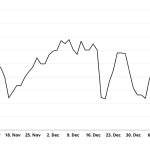
With debate raging about the forward implications of the equities sector, on-the-fence investors may want to consider underappreciated utility stocks to buy. Fundamentally, the underlying industry offers critical services. As you know, bad things happen when people flip the switch and the light doesn’t turn on.
On a practical level for investors, utility stocks to buy benefit richly from inelastic demand. No matter what happens in the economy, both households and businesses must pay the bills. This dynamic also means that utilities can raise prices and demand won’t drop significantly. Obviously, that’s a massive advantage ahead of market uncertainty.
Also, utilities enjoy a natural monopoly. Due to the capital-intensive nature of the sector, not many companies can rival entrenched utilities. Also, you have an intense regulatory framework that dissuades competition.
Now, to broaden the scope of this discussion, I’ve also included energy generators and service providers. While they might not be traditional utilities, they’re vital to the overall infrastructure. And on that note, below are intriguing utility stocks to buy.
Public Service Enterprise (PEG)

Based in Newark, New Jersey, Public Service Enterprise (NYSE:PEG) is a diversified energy firm. According to its public profile, the company is its state’s oldest and largest investor-owned utility firm. Since the beginning of the year, PEG lost almost 3% of equity value. Therefore, it’s not quite a market favorite. Still, the red ink also makes it an interesting idea for undervalued utility stocks.
Looking at its financials, PEG trades at a trailing-year earnings multiple of 10.89x. That’s noticeably lower than the sector median of 14.37x. For full disclosure, Public Service doesn’t exactly distinguish itself from other utility stocks with sterling financials. As an example, it runs a high debt load, as evidenced by its cash-to-debt ratio of 0.03X.
Nevertheless, what’s important here is its strong profit margins, particularly its net margin of 24%. Also, the company carries a forward yield of 3.77%.
Analysts rate PEG a moderate buy with a $65.58 price target, implying over 8% upside potential.
Vistra Energy (VST)

An integrated retail electricity and power generation firm, Vistra Energy (NYSE:VST) is one of the largest utility stocks. Featuring a multi-varied business, Vistra’s portfolio includes natural gas, nuclear power, solar, and battery energy storage facilities. Based in Irving, Texas, the company carries a market capitalization just north of $12 billion.
One of the best-performing utility stocks to buy, VST gained nearly 47% of equity value since the January opener. On paper, that doesn’t sound like a bargain. Still, on a financial note, VST still trades at a forward earnings multiple of 8.28x. In contrast, the sector median comes in at 13.99x. In addition, the market prices VST shares at 0.77x trailing revenue, which is also undervalued.
Now, with the upside performance, Vistra isn’t the most generous in terms of its forward yield at only 2.52%. Still, it’s better than nothing, especially ahead of a possible economic slowdown.
Analysts peg VST a unanimous strong buy with a $37.29 target, implying 14% growth.
Brookfield Renewable (BEPC)

While not a traditional entry among utility stocks to buy, Brookfield Renewable (NYSE:BEPC) nevertheless deserves consideration thanks to its wider importance to energy generation. Per its website, Brookfield represents one of the world’s largest platforms for renewable power and decarbonization solutions. It also features a diversified portfolio, including wind solar, and hydroelectric power.
However, the main drawback of BEPC from an investment standpoint is its volatility risk. Since the start of the year, shares stumbled 21%. And in the past five years, they’re down almost 15%, which has frustrated stakeholders. Still, from a financial perspective, its trailing-year earnings multiple without non-recurring items (NRI) sits at 6.49x. In contrast, the industry median value is 14.54x.
Also, the company benefits from robust top-line expansion. Its three-year revenue growth rate clocks in at 29%, beating out 78.57% of its rivals. Also, BEPC features a forward yield of 5.54%.
Wells Fargo’s Jonathan Reeder rates shares a buy with a $34 target, implying almost 40% upside.
AES (AES)

Though one of the riskiest utility stocks to buy from a volatility standpoint, AES (NYSE:AES) could entice “conservative” gamblers, if that makes sense. Per its public profile, AES owns and operates power plants. Through these facilities, the company generates and sells electricity to end users and intermediaries, such as utilities and industrial entities.
However, as alluded to earlier, a darker side exists to the AES narrative and that is its chart “performance.” Since the start of the year, shares have tumbled more than 48%. At the same time, AES is only down a fraction relative to the beginning of its trailing five-year period. Stated differently, shares could be substantially de-risked.
If you prefer a by-the-numbers approach, AES trades at a forward earnings multiple of 7.89x. That’s much lower than the 13.44x forward price-earnings ratio of the regulated utility space. Also, the company provides a forward yield of 4.57% and a low payout ratio of 35.17%.
Analysts rate AES a moderate buy with a $20.29 target, also implying almost 40% growth.
TransAlta (TAC)

Headquartered in Calgary, Alberta, Canada, TransAlta (NYSE:TAC) is an electricity power generator and wholesale marketing firm. Per its corporate profile, TransAlta operates 76 power plants in Canada, the U.S., and Australia. Further, the company operates wind, hydroelectric, natural gas, and coal power generation facilities. Though relevant like other major utility stocks, TAC hasn’t quite enjoyed a strong outing in 2023.
Since the January opener, TAC gave up more than 14% of equity value. To provide the heads-up, the negativity has been severe recently. In the trailing one-month period, TAC plunged 17%. Still, for adventurous investors, there is a de-risking argument to be had. But this too is a dangerous proposition since it may be a value trap.
Based on the numbers, TAC trades at a trailing-year earnings multiple (without NRI) of 10.89x. Also, it trades at 0.82x trailing revenue. Both stats are considered undervalued. Given the relevance and the forward yield of 2.12%, it’s a tempting wager.
Also, analysts peg TAC a unanimous strong buy with a $11.92 target, projecting over 56% upside.
Fluence Energy (FLNC)

Another enterprise that’s not traditionally considered one of the utility stocks, Fluence Energy (NASDAQ:FLNC) is akin to the medical staff for a professional baseball club. While Fluence might not be taking at-bats (to extend the analogy), it keeps the team viable over a long season. It does this through the development, deployment, and management of energy storage systems. These systems can be used by utilities to enhance grid reliability.
Unlike some other pure-play utility stocks to buy, FLNC is a solid performer in the charts. Since the beginning of this year, shares swung up more than 17%. And in the past 365 days, it returned almost 37% of market value. Notably, FLNC trades at only 1.13x trailing sales, lower than 70.4% of its peers. That’s quite remarkable considering that Fluence’s three-year revenue growth rate soars at 109.8%.
In fairness, the company’s other metrics are questionable, to be diplomatic. However, it does feature a robust cash-to-debt ratio of 5.62x.
Lastly, analysts rate FLNC a moderate buy with a $31.86 target, implying nearly 68% growth.
Opal Fuels (OPAL)

As with Fluence Energy above, Opal Fuels (NASDAQ:OPAL) wouldn’t technically be considered a candidate for utility stocks. However, if you’re willing to be a little less stringent than say the governing body of Formula 1 motor racing, you might be interested in learning about Opal. As a fully integrated leader in the production and distribution of low-carbon intensity renewable natural gas (RNG), the enterprise enjoys strong forward implications.
As it relates to the subject at hand, utility firms and other industrial users are rapidly discovering the vast opportunities of RNG. Further, as political and social winds pressure policymakers, RNG may become an important component of both energy security and net-zero emissions directives. So, it’s worth putting on your radar, even though it’s inking a 9% loss year-to-date.
Still, that also means OPAL trades at 9x trailing earnings. It also prints an impressive three-year revenue growth rate of 23.9%.
On a final note, analysts peg shares a moderate buy with a $12.09 target, projecting over 93% upside potential.
On the date of publication, Josh Enomoto did not have (either directly or indirectly) any positions in the securities mentioned in this article. The opinions expressed in this article are those of the writer, subject to the InvestorPlace.com Publishing Guidelines.




